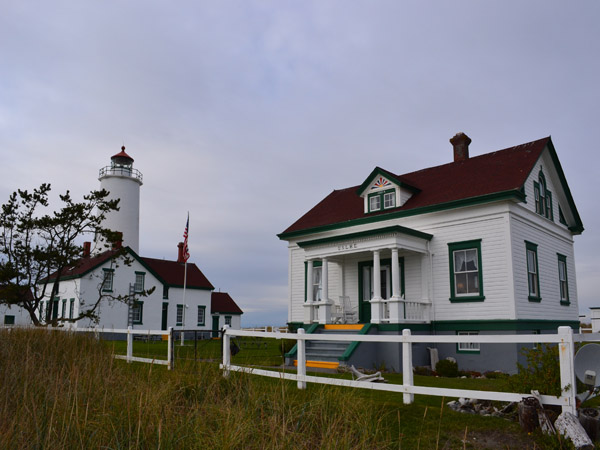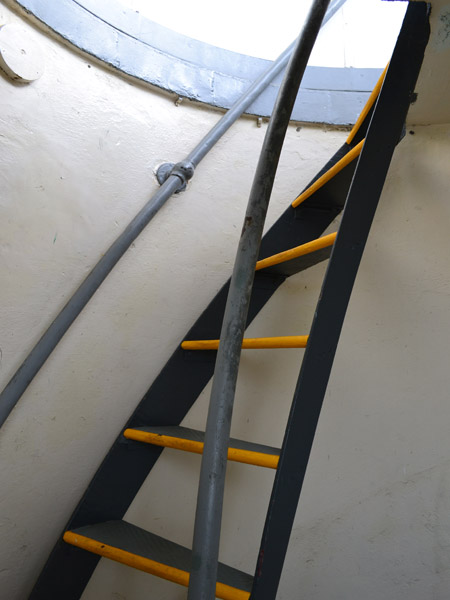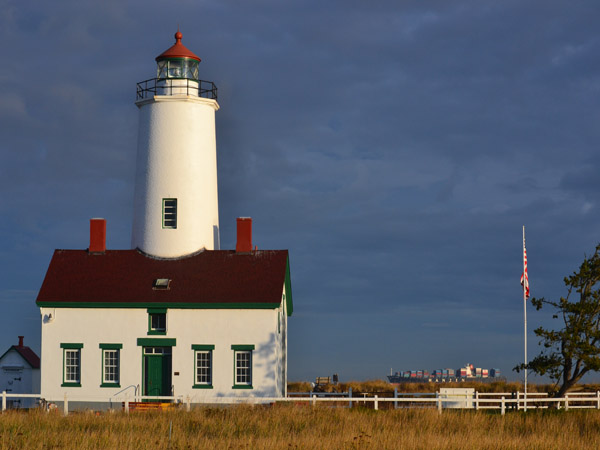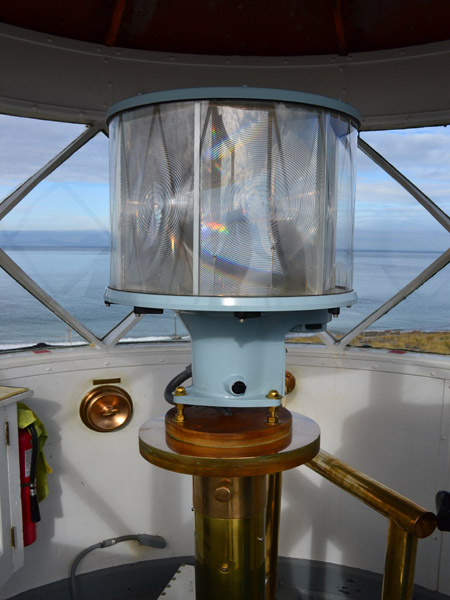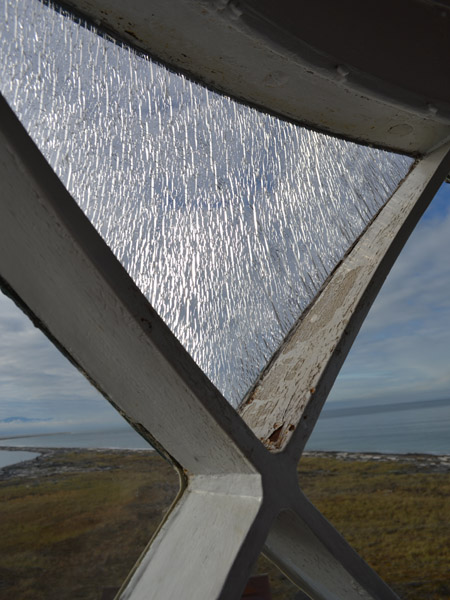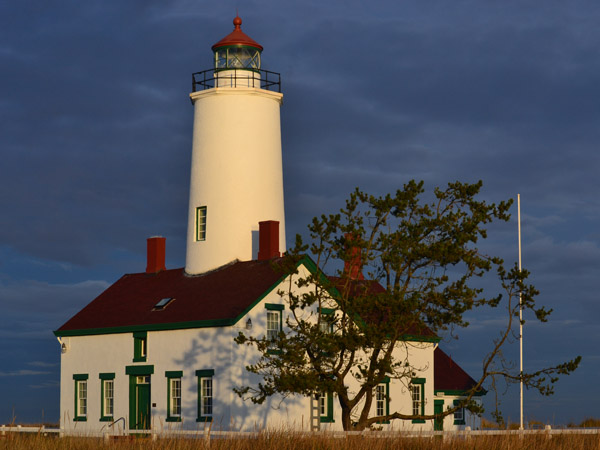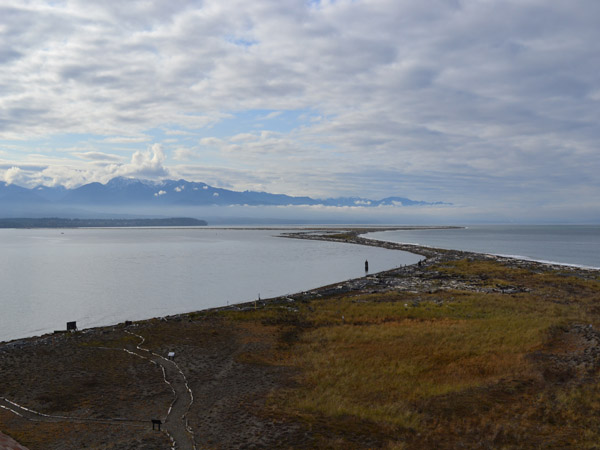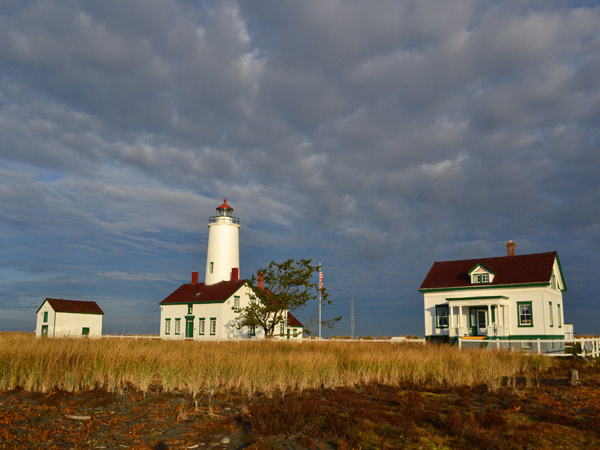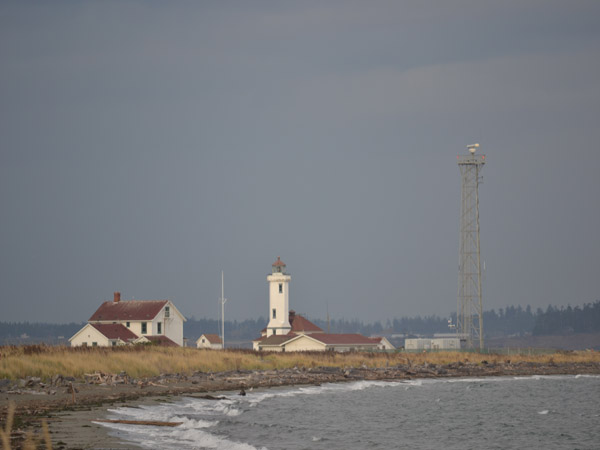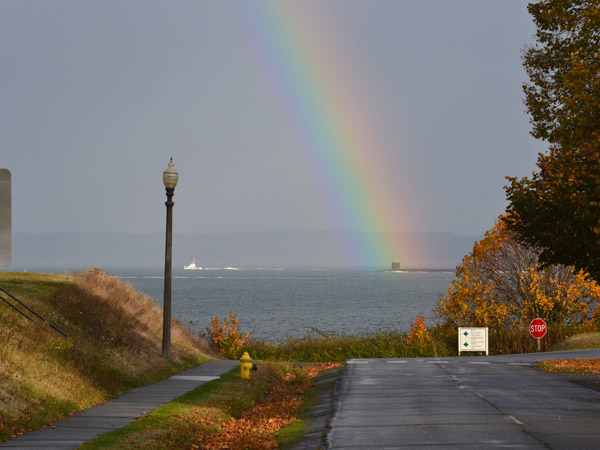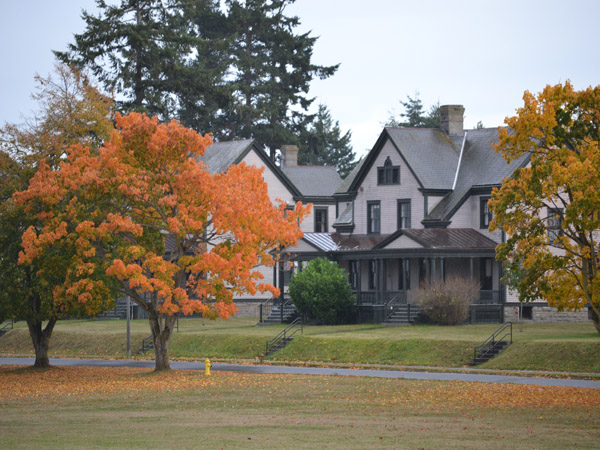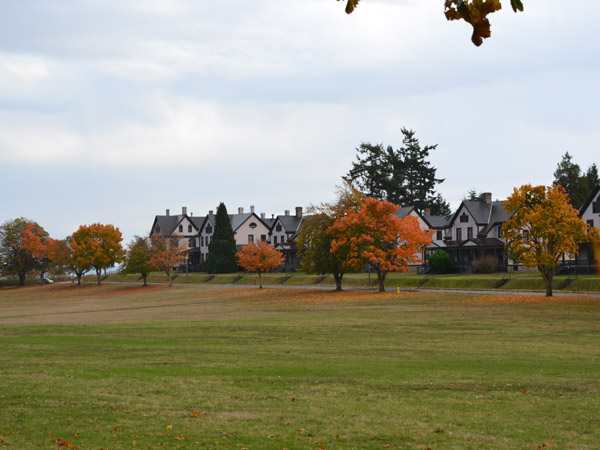Here are the Keeper’s Quarters at the New Dungeness Light Station. Keepers originally were all housed in rooms in the Lighthouse building. The Keepers Quarters were constructed for the Officer-in-charge and completed in 1904. Families lived there continually until the last Coast Guard keepers left in 1994. There are three bedrooms and two baths, kitchen, dining room, and comfortable living room. A full basement houses laundry facilities, a pool/ping-pong table, and storage. There is a small, cozy “library” upstairs under the center dormer that serves as a perfect spot to curl up with a good book.

The kitchen is done in a “mid-century” style. It’s well-equipped, clean, and pleasant. Keepers usually share dinners and coordinate menus before they go out to the Lighthouse. Some previous keepers posted their dinner menus in the daily log and they clearly weren’t roughing it. My vegetarian chocolate chili suddenly seemed terribly modest.
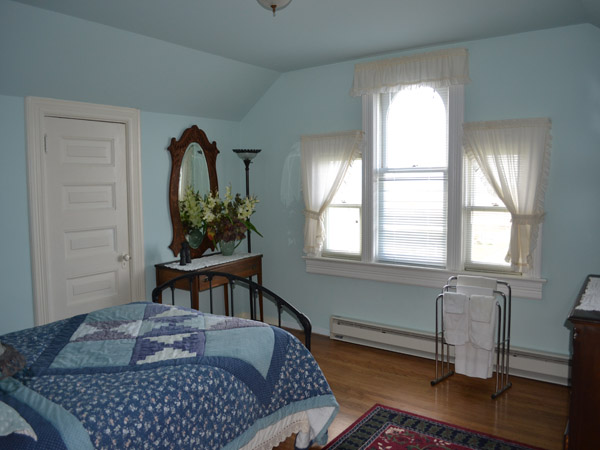
Here’s one of the three bedrooms. It looks directly onto the lighthouse building. Other rooms face the Strait of Juan de Fuca, Dungeness Bay and the Olympic Mountains, or an unobstructed view of the Cascade Mountains to the east. Despite the building’s age, continual use for over 100 years, and location in a harsh environment it is in very good condition. I’ve stayed in newer coastal buildings that soak up the salt air and exude dankness. This one is clean and cheerful.
Keepers at the New Dungeness Light Station pay a weekly per person fee to stay here. They bring their own food, and perform volunteer tasks such as leading lighthouse tours, cleaning, watering, and mowing the lawn. It’s not a free ride, but is a way to give back for the privilege of an extraordinary experience and contributes to the efforts that keep the Light Station in its laudable condition. It appears to be a well run, successful model for historic preservation.
The New Dungeness Lighthouse Station is located in the middle of the Dungeness National Wildlife Refuge. Tomorrow I’ll show you three of our eagle sightings.
